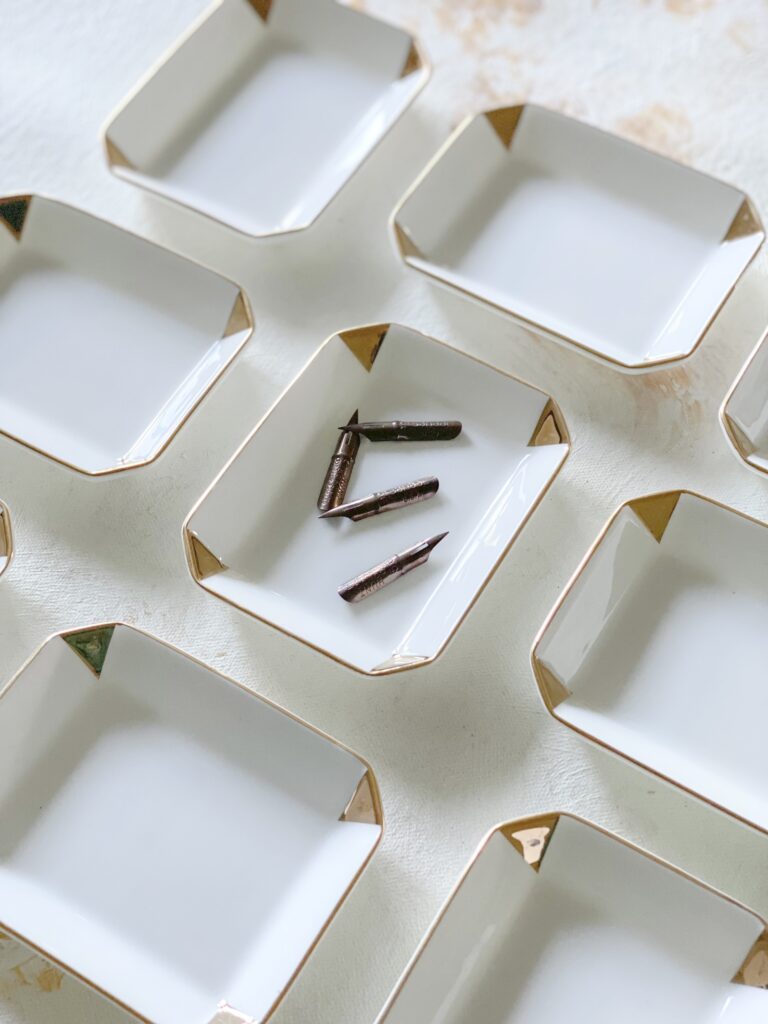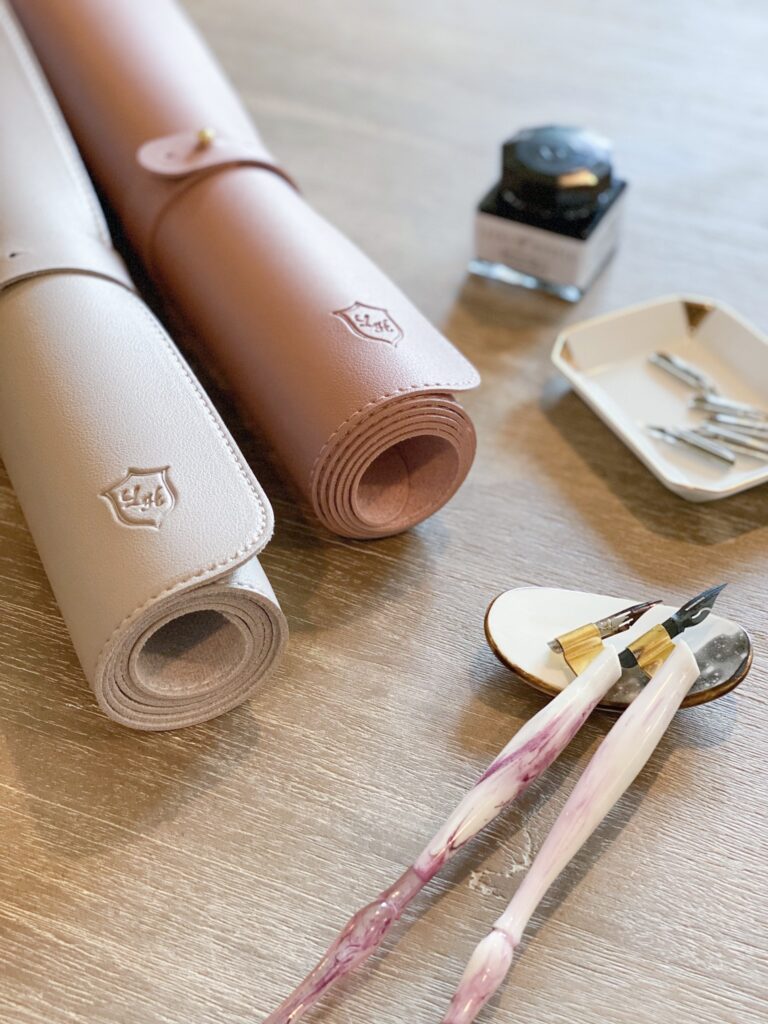If you are interested in learning calligraphy or hand lettering, it can be hard to know exactly where to start. There are a variety of tools and equipment, and a newbie or hobbyist might not know what items to purchase to be successful. Plus, learning a new skill like calligraphy will take patience and practice. But, as I know first-hand, calligraphy is a therapeutic and relaxing art form that can be fun for anyone, no matter your skill level. I get asked lots of questions from what supplies do I use and love, to my best advice for those just starting out. So, today, I’m sharing a few of the most important things that I wish I knew before I started calligraphy.
I started my calligraphy and fine stationery business in 2002, and today not only do I provide full custom stationery design and production for weddings and events, I also offer online calligraphy classes for beginners and those who want to improve their skills. Whether you’re one of my calligraphy students, or someone who is interested in learning a new, fullfilling hobby, you’ll be a couple steps ahead of the game with the calligraphy tips I’m sharing. I wish I had someone showing me the ropes as I began my calligraphy journey.

Supplies Matter
The first thing that all calligraphy beginners – or anyone looking to improve their calligraphy skills – should know is that supplies matter. Yes, from pens to paper to ink, the calligraphy tools that you use matter – a lot. And, many times just having the right tools can make all the difference.
You will want to not only get just the right set of calligraphy tools that are curated to work well together, but you’ll also want to have the proper instructions on how to actually use your tools. After all, just having the tools is not enough. You must know how to use your calligraphy tools too!
Just knowing the right calligraphy tools to get – and how to properly use them in your practice – is going to save you time and money in the long run.
There are a wide variety of calligraphy papers, pens, and inks, but not all tools work well together. Certain inks will work best with particular paper types, so you want to learn what combinations work in conjunction so that you’re as successful as you can be. Having good supplies and tools will help you not feel as discouraged, or thinking you can’t learn calligraphy, when all along it was a tool or supply issue that can be easily solved.
Trust me, I’ve use all the pens and the inks, and tested out many (many) combinations over the years! In the calligraphy supply and course shop, I’ve personally curated a collection of tools and supplies that are the best of the best. Each piece is designed to work well together. However, as I’ve said, supplies matter, and so does the instruction when it comes to success at calligraphy. This is why I also offer a variety of online calligraphy courses and classes from getting started to improving your pen technique to honing specific topics and skills.
If you’re ready to get started, our calligraphy starter kit is a great supplies package to begin with, as it has all of the high quality tools you need to start learning modern pointed-pen calligraphy, along with easy to follow and understand instructions. It’s the perfect combination of not only the right calligraphy supplies, but the helpful instruction from someone who has been there, done that, which will make all the difference in your calligraphy practice.

Dedicated Practice
The second most important thing to know about learning calligraphy, and something that I wish someone would have told me a long time ago, is that it takes patience and dedicated practice. As I just shared, supplies and instructions matter in calligraphy, but if you don’t back that up with patience and practice, it will all be for not.
Consistency is key when learning any skill, but especially with calligraphy. Drill practice is the best way to improve your skills as you practice strokes, and learn how to move your hand and pen. In my experience, repetitive practice of your calligraphy skills is the best, quickest way to go from a novice to a confident calligrapher.
A great way to stay consistent with your calligraphy drills practice is our calligraphy practice plan 1.0 and 2.0. This online calligraphy course will help guide your practice as you improve your skills and get a better grasp on the essential strokes that will lead to you being a skilled calligrapher.
Free Calligraphy Guide
I love the art of callligraphy. I love it so much that I designed a whole business around it, and I dedicate a significant portion of my time to teaching others the art of calligraphy as well. The last thing that I want is for calligraphy to be just another hobby that you try for a weekend, and then never do again. I’m committed to helping you create a sustainble calligraphy practice that you can enjoy for many, many years to come.
If you are ready to begin learning calligraphy, you can get our FREE beginner calligraphy guide here. This handy guide has everything you need to get a jump start on your calligraphy practice, and set yourself up for success.
Anyone can learn calligraphy, even those who don’t think they are crafty or particularly artistic. Simply knowing that the quality of your supplies matter, as well as being consistent with your practice, will put you in such a better position for success when it comes to learning the art of calligraphy.
Be sure to check out more of my calligraphy tips and advice to learn more, as well as our shop for the best calligraphy supplies, tools and courses to support you in your calligraphy journey.